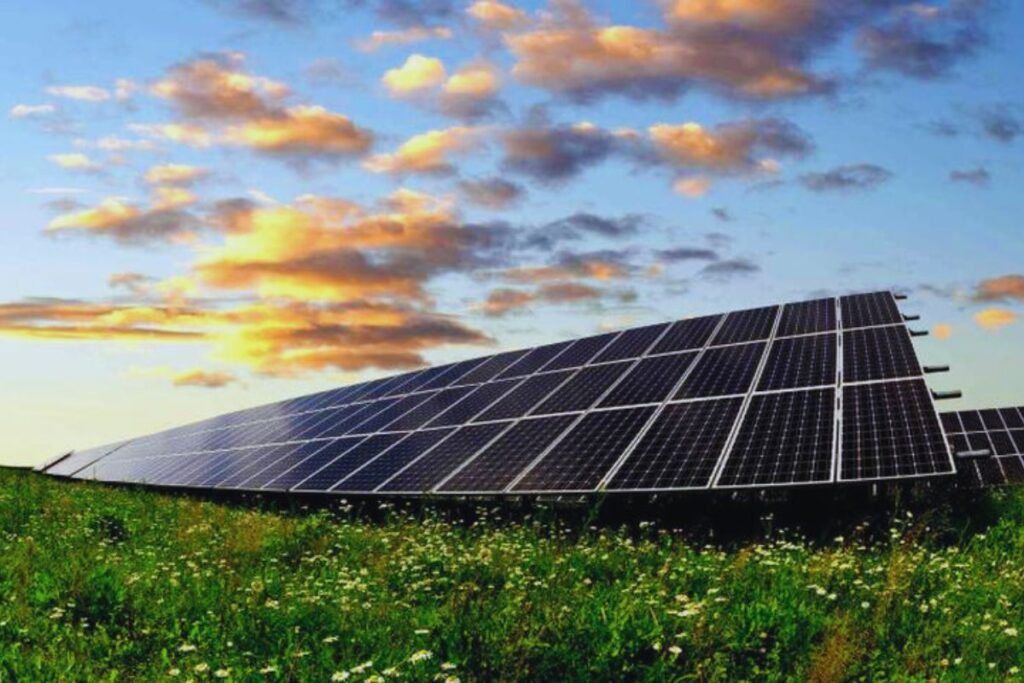Imagine opening your electricity bill and seeing the numbers dropping month by month, a financial utopia that seems distant when faced with the relentless reality of rising energy costs.
Now, visualize your home as a green power plant, where every ray of sunlight is captured and converted into energy that powers your life, reducing your dependence on expensive and polluting energy sources.
Solar energy is no longer an unaffordable luxury, adorning only the rooftops of environmental visionaries or tech enthusiasts with deep pockets.
The shortage of clean, affordable energy solutions is coming to an end, and your home could be the next to join this energy revolution.
Neste artigo, desvendamos as formas incrivelmente simples, mas poderosas, de transformar itens comuns de sua casa em máquinas de energia solar.
Não é apenas sobre economia de custos; é uma chamada para a ação frente à crise energética que enfrentamos, um passo que você, sim você, pode dar hoje.
A oportunidade de fazer parte dessa mudança é agora, e a informação que compartilharei é a sua vantagem secreta.
So, get ready to unlock the solar potential of your home with methods that are within your reach.
Read on and join the elite of homeowners who not only dream of a sustainable future, but who are actively shaping it with their own hands.
Understanding the Fundamentals of Solar Energy
Before we delve into the practicalities of harnessing solar energy at home, it's essential to have a solid understanding of the underlying principles.
Solar energy is generated by capturing sunlight and converting it into electricity or heat using solar panels or solar heating systems.
Photovoltaic (PV) Cells
Photovoltaic (PV) cells are the heart of solar panels, where sunlight excites electrons to create an electrical current. This current can then be used to power your home or stored in batteries for later use.
Assessing Your Home’s Solar Potential

The amount of solar energy your home can harness depends on several factors, including geographic location, orientation, shading, and roof pitch.
Considerations
- South-facing roofs with minimal shading tend to be the most efficient for solar panel installations.
- Before proceeding, evaluate your roof's suitability for solar panels and estimate potential power generation using online tools or consulting a professional solar installer.
DIY Solar Projects with Household Items

1. Solar Oven
A solar oven is a simple yet effective way to harness solar energy for cooking and baking. You can create your own solar oven using a cardboard box, aluminum foil, and a sheet of glass or clear plastic.
Necessary materials
- Cardboard box
- Aluminum Foil
- Sheet of glass or clear plastic
- Sticker
Instructions
- Line the inside of the box with aluminum foil.
- Cut an opening in the box lid and attach the glass/plastic sheet to cover it.
- Place your food inside the box and position it in direct sunlight.
- Adjust the opening to reflect sunlight onto your food, maximizing heat absorption.
2. Solar Water Heater
Water heating represents a significant part of domestic energy consumption. A solar water heater can substantially reduce energy bills by using sunlight to heat water.
Necessary materials
- Black plastic tubes
- Containers or barrels
- Insulating materials (e.g. foam or old blankets)
- Piping and valves
Instructions
- Arrange the black plastic tubes in a serpentine pattern on a wooden board.
- Connect one end of the tubes to an inlet and the other to an outlet container or barrel.
- Insulate containers to retain heat.
- Let sunlight warm the pipes and heat the water as it circulates through them.
3. Solar Charger
In a world dependent on electronic devices, a solar charger is a practical and environmentally friendly solution for keeping your devices charged.
Necessary materials
- Small solar panel
- USB charging module
- Rechargable battery
- Protective box (e.g. plastic box)
Instructions
- Connect the solar panel to the USB charging module.
- Connect the charging module to the rechargeable battery.
- Place the components inside the protective box, leaving the solar panel exposed to sunlight.
- Use the solar charger to connect your devices to the USB port.
Improving Solar Power Generation
Enquanto os projetos “Faça Você Mesmo” acima ofereçam uma excelente introdução ao aproveitamento da energia solar em casa, há várias etapas adicionais que você pode tomar para aprimorar a geração e utilização de energia:
- Low Consumption Appliances: Replace traditional appliances with more efficient ones that consume less energy.
- Battery Storage: Invest in high-quality batteries to store excess solar energy.
- Regular Maintenance: Keep your solar panels clean and free of debris to ensure maximum efficiency.
Conclusion

Harnessing solar energy at home using common household items is an environmentally friendly endeavor and a practical way to reduce energy costs.
Take the first step towards a greener future by embracing solar energy. Transform your household items into tools that harness the power of the sun and discover the satisfaction of generating clean, renewable energy in your own space.




